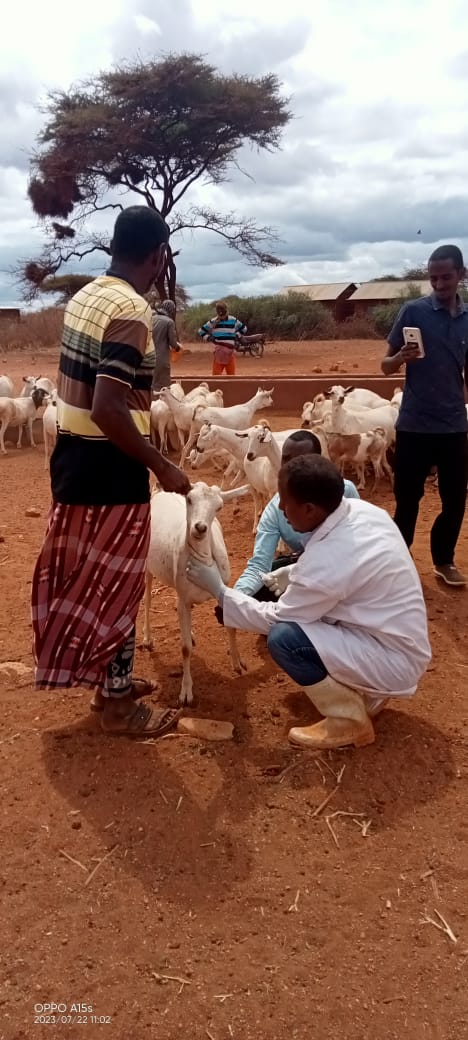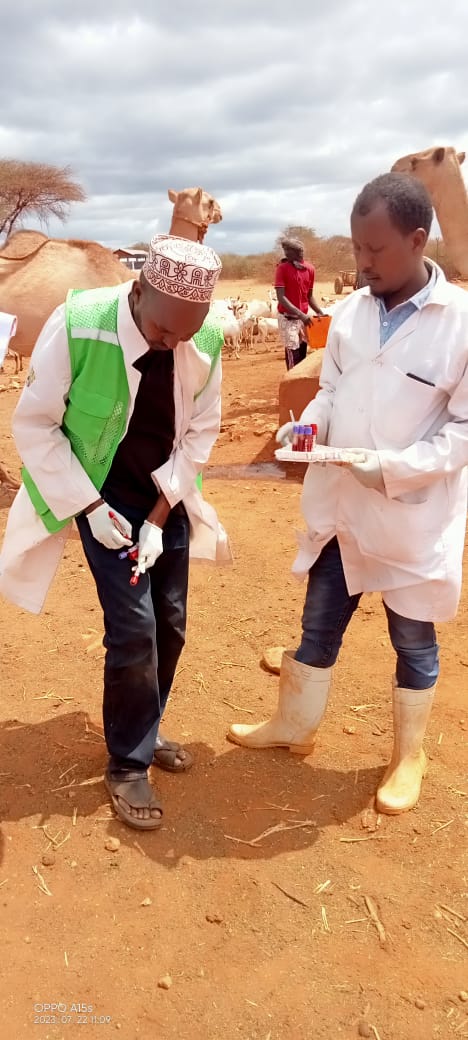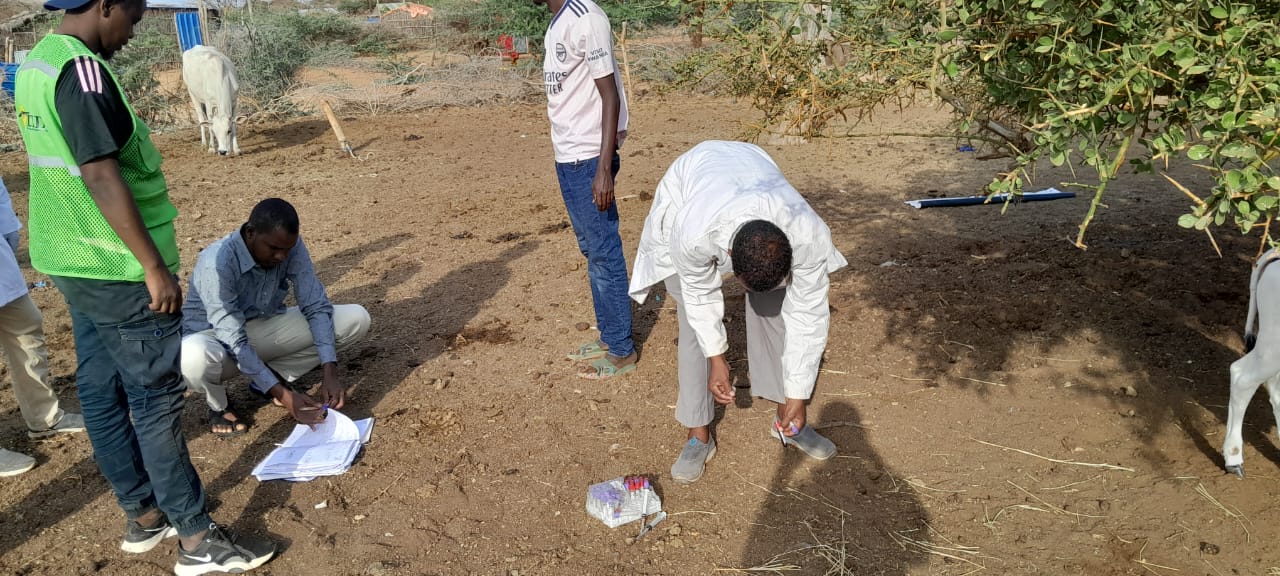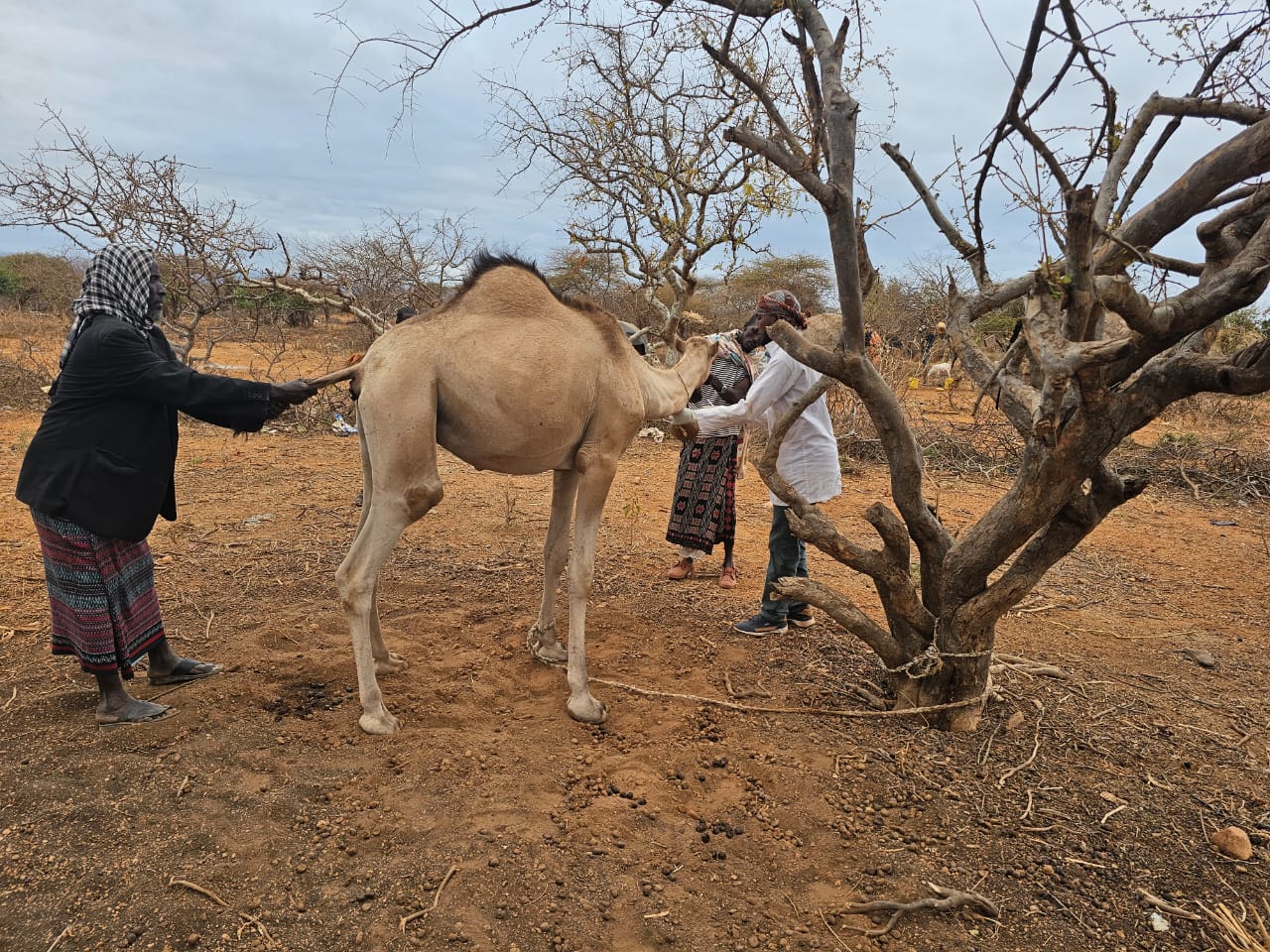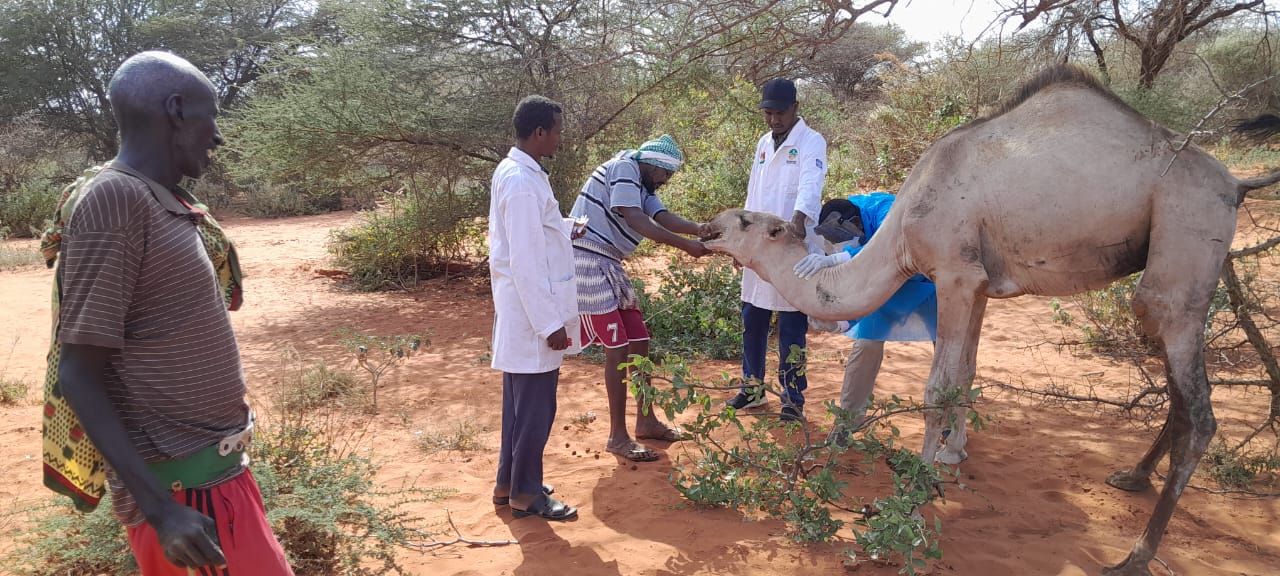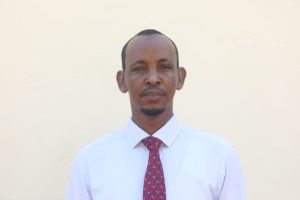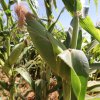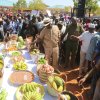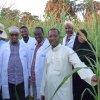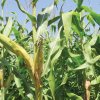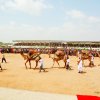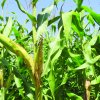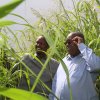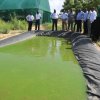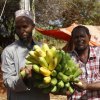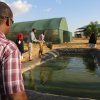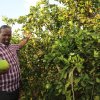Agriculture, Livestock & Fisheries
Departments.
Achievements of the department
- The county government procured 16MT of assorted seeds for cereals, pulses,and horticultural crops which were distributed to farmers in all sub-counties to take advantage of the rainfall received and receding flood waters along several lagas in the county. Currently there is an individual farmer -Mohamed Ibrahim in Burashum-Banisa who has 40 acres of Gadam sorghum and 5 acres of an orchard which are doing well.
- Due to the above normal rainfall received most rainfed farms were planted with maize, sorghum , cowpeas and other horticultural crops. There was an outbreak of fall armyworm infestation in most farms. The County Government procured pesticides (Escort 1.9E.C and Integra) which was used to bring the pest under control.
- The county government repaired 4No tractors, 4No ploughs and 3No harrows in AMS which were previously grounded.Tractor Hire Services which was not operational has resumed.
- In collaboration with Islamic Relief Kenya the Department of Agriculture conducted assessment of floods along the Daua River in Mandera East, Sala(Lafey) and Mandera North. A report was made with recommendations for possible interventions from stakeholders.
- Agriculture and Technical Technical Working Group has been revitalized and is working harmoniously with Non State Actors such as Islamic Relief,NAPAD, RACIDA and ACF.
- Under the Sustainable Food Systems Program supported by WFP the following achievements have been made:
- 7,000 HH in Mandera West, Mandera North and Banisa continued to receive food transfers of cereals, pulses and vegetable oil
- 25,260 vulnerable HH countywide are receiving cash transfers through COCOP
- Desilting and rehabilitation of Guul-janey Water Pan (25,200cubic metres) in Mandera West
- Installation of 2No Posho mills, 2No De-hullers and 2No. threshers in Takaba and Banisa.
- Farmer and staff capacity strengthening through several field visits, trainings and workshops.
- Farmer Service Centre model was introduced in the county after 7 technical staff had a tour to Tharaka-Nithi and Meru Counties and selected lead farmers trained in Moyale.
Animal Health
County Veterinary Service is a devolved function whose core mandates include Veterinary policies, Animal Health, Animal welfare, Veterinary public health, Vector control, conservation of animal reproductive resources, and Regulatory Services. These services are highly critical for Mandera County residents who rely on Livestock as primary sources of livelihood. The nomadic pastoral practices create an ever-increasing need for veterinary services whose role help protect livestock-based livelihood through mass vaccinations, movement control, and other herd health services.
Before devolution Veterinary service was limited to a few areas due to the Vastness of the county, low staffing level, and poor infrastructure. Following devolution, through County leadership Veterinary Department achieved 80% of the current staffing level. From 2013 to 2023 the county Ministry of Agriculture and Livestock recruited up to 28 technical Veterinary staff whose cadres include Vet officers, Chief Animal Health officers (CAHO), Animal health officers/Assistants (AHO/AHA), and lab technologists. This has greatly improved Veterinary service delivery from low to medium level helping achieve timely disease surveillance and control interventions. This has minimized outbreaks and prevented loss through mass deaths from diseases.
On infrastructure, prior to Devolution, Veterinary service delivery infrastructure was few and scattered all over the County. The County leadership had improved the infrastructure both at the institutional and community level to enhance vet service delivery. At the institutional level, County established and operationalized a diagnostic Lab, a Cold room for vaccines, and Animal Insemination (AI) center (Livestock farm at Bulla haji). The county repaired over 90% of old structures making them suitable for use as veterinary drug stores, offices, and staff houses. On the other hand, at the community level, Veterinary service delivery projects included Mandera East modern slaughterhouse which was completed in 2021 and is currently under a co-management model and directly providing livelihood for over 1800 individual households and indirectly for >4,000 households in Mandera East. In addition to this, the County’s contribution led to the completion and operationalization of a similar modern slaughterhouse in Mandera North which was initiated prior to devolution by the National Government through an Economic stimulus program. Another modern slaughterhouse is undergoing construction at Elwak and is expected to be operational by the end of 2023. These projects have had a high impact on livelihood and created jobs for the residents, widening the sources of livelihood for Butchermen and livestock traders. In addition to Livelihood improvement, the projects had improved animal product safety by 95% and hence contributed to the well-being of Mandera residents. At the ward level, the county leadership allowed the establishment of over 14 strategically placed cattle crushes and constructed 10 slaughter slabs to improve livestock-based livelihoods. Generally, these infrastructures had improved disease control by 70% and will continue to act as strategic nodes for Veterinary service delivery at Sub-county, ward and village levels.
Animal Health Achievements 2023/2024
Disease Control
Mandera County Government recognizes livestock as the primary source of Livelihood for over 80% of the population playing a major role in the economy and food security of the County. The County leadership also understands the devastating effects of diseases and illnesses on the animal population, well-being, production, and productivity.
Mandera County shares a porous border with Ethiopian and Somalia that allows an influx of naïve populations that are invariably incubating or carrying transboundary animal diseases such as Contagious Caprine Pleuropneumonia (CCPP), Peste des petit ruminants (PPR), Sheep and Goat pox (SGP), Lumpy skin Disease (LSD), Anthrax, Brucellosis, Trypanosomiasis, Rift-valley fever and Foot and Mouth disease. Control of these diseases requires regular surveillance, vaccination campaigns, quarantines, and movement controls. However, due to the vastness of the County, low staffing level, and increased burden by non-resident herds, the County resources could not allow adequate control interventions. To fill the intervention gaps, some organizations have partnered with the County and key among the partners include RACIDA, IRK, ACF, VSF-Suis, FAO, ADRA, and DRC. During routine and emergency interventions, partners provided limited logistic support (Transport) and staff allowances while County provided all the necessary inputs (Drugs, vaccines, equipment, and personnel).
During FY2022/2023, County Veterinary Department received assortment of essential drugs and vaccines Mainly from County Government but also from FAO through State department of Livestock the Directorate of Veterinary services. In terms of Capacity trainings especially on disease surveillance and control, FCDC supported a 4 week bench training for 1 lab technologist, State Department in collaboration with FAO supported a 4 week training for 2 staff on Epidemiology, FAO trained 4 staff on Bio-safety and security. At Community level, a total of 120 CDRs were trained through support by RACIDA, ACF, DRC and IRK
In terms of animal health activities in Fy2022/2023, the department carried out a total of 3 Countywide routine vaccination Campaigns against transboundary diseases, 3 sero-surveillance campaigns for PPR and RVF, 3 zoonotic disease Outbreak investigations; Brucellosis, Trypanosomiasis and Rabies and one emergency outbreak responses against Trypanosomiasis in Camel.
During Countywide vaccination and treatment campaigns (July 2022 to June 2023), a total of 438,867 Goats were vaccinated against CCPP, 206, 632 Goats against SGP; 103,565 Sheep against SGP; 10,208 cattle against LSD; 289, 472 Goats against PPR; 96, 612 Sheep against PPR; 24,004 Camel against BQA. In May 2023, a total of 12,672 camels were treated against Trypanosomiasis.
Your Content Goes Here
Vision.
An innovative, commercial-oriented and modern agriculture and rural development sector.
Mission.
To improve the livelihood of Mandera County residents through promotion of competitive agricultural production, sustainable livestock and fisheries production, affordable and quality veterinary services provision and training and adoption of smallholder irrigation that is efficient, effective and sustainable.
Goal of the Sector.
To promote and facilitate production of food and agricultural raw materials, ensure food security, promote agro-based industry, agricultural export and sustainable agricultural practice.
Core Values
- Professionalism
- Integrity
- Efficiency
- Partnerships
- Gender equity
- Accountability
- Result oriented
- Customer satisfaction
Key Achievements
- Development of irrigation infrastructure along River Dawa for irrigated crop production through construction of new structures, as well as rehabilitation of existing structures to improve their efficiencies
- Bush clearing to open more farm land for crop production
- Carried out bush clearing to open up more land for cultivation since (Mathenge) Prosopis juliflora had invaded and colonized most of the farms, especially along River Daua.
- A total of 2,145 acres of farmland were opened up through bush clearing to create more arable land for cultivation.
- Development of water spreading, water harvesting and storage reservoirs for farming in rain-fed areas
- Water spreading structures have been constructed to direct runoff to farms for crop production, especially in areas with streams (laggas). A total of 160 metres of water spreading structures were constructed at Khorjab, Elelani and Girissa.
- One 30m3 of masonry water tank with the required piping was constructed at Neboi Suez Orchard farm to promote fruit farming.
- Eight underground water tanks with total capacity of 948m3 were constructed in Banisa, Mandera West and Mandera South.
- Three water pans of 90,000m3 in total were excavated at Banisa and Dandu with complete provision of farm inputs and irrigation infrastructure.
- Four water pans for water harvesting for crop were de-silted at Khayu, Deka, Khofole and Harharo.
- Four boreholes for irrigated crop production, complete with all accessories, were drilled at Lafey, Fino, Elele and Dabacity and are operational.
- Provision of irrigation pump sets to schemes and farmer groups
- Nine 2/3-piston diesel engine water pump sets were provided for the main irrigation schemes.
- One hundred and four 1-piston diesel engine water pump sets were supplied to group farms.
- Forty portable petrol water pumps were supplied to group farms with shallow wells.
- Procurement of farm inputs and tractors with implements
- Over the last five years, more than 180 metric tons of assorted seeds and seedlings were procured and distributed to farmers countywide.
- Six farm tractors, six ploughs, two harrows and one trailer were also procured for Agricultural Mechanization Services station to assist in farm mechanisation. Two tractors and implements were donated by the Turkish Government.
- Construction of perimeter fence and farm access roads
- Perimeter fences are constructed to prevent farms from invasion by wildlife, which may damage crops before being harvested. Farm access roads are constructed to enable farmers transport farm tools and inputs while carrying out farm operations. They are also important in transporting crop produce after harvest.
- A total of 2,910-metre-long perimeter fence was constructed and 1 kilometre of farm access road was gravelled by the county government in the last five years


